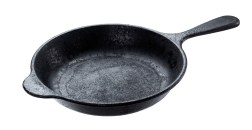Understanding the LED Light Bulb Equivalent Chart: A Comprehensive Guide
As technology continues to advance, more and more people are making the switch from traditional incandescent bulbs to energy-efficient LED light bulbs. However, with the wide variety of options available, it can be overwhelming to determine which LED bulb is equivalent to a certain wattage of incandescent bulb. That’s where an LED light bulb equivalent chart comes in handy. In this comprehensive guide, we will explore what an LED light bulb equivalent chart is and how it can help you make informed decisions when purchasing LED bulbs.
What is an LED Light Bulb Equivalent Chart?
An LED light bulb equivalent chart is a reference tool that provides a comparison between the wattage of traditional incandescent bulbs and the lumens (brightness) of LED bulbs. Since LEDs consume less energy while producing the same amount of light as incandescent bulbs, their brightness is measured in lumens rather than watts. This conversion chart allows consumers to easily find an LED bulb with a similar level of brightness as their old incandescent bulbs.
How Does an LED Light Bulb Equivalent Chart Work?
The key concept behind an LED light bulb equivalent chart is lumens per watt (LPW). LPW measures how efficiently a light source converts electrical energy into visible light. Incandescent bulbs have low LPW values, typically around 10-20 LPW, meaning they produce less visible light per watt consumed compared to LEDs.
To determine the equivalent LED bulb for your desired brightness level, consult the chart. For example, if you currently have a 60-watt incandescent bulb that produces approximately 800 lumens of brightness, you would look for an LED bulb with a similar lumen output on the chart. In this case, you might find that an 8-12 watt LED bulb would provide comparable illumination.
Benefits of Using an LED Light Bulb Equivalent Chart
Using an LED light bulb equivalent chart offers several benefits for consumers. Firstly, it allows for a seamless transition from incandescent to LED bulbs without compromising on the desired brightness level. By referencing the chart, you can easily find an LED bulb that provides the same level of illumination as your old incandescent bulb.
Secondly, an LED light bulb equivalent chart helps you save money in the long run. LEDs are known for their energy efficiency, consuming significantly less electricity compared to traditional bulbs. By choosing an LED bulb with a lower wattage but similar lumens, you can reduce your energy consumption and ultimately lower your electricity bills.
Lastly, relying on the chart ensures that you select the right LED bulb for each specific application. Different areas in your home may require different levels of brightness. With an equivalent chart, you can accurately choose the appropriate LED bulb for each room or task.
Other Factors to Consider
While an LED light bulb equivalent chart is a valuable tool, there are other factors to consider when purchasing LED bulbs. Color temperature is one such factor that determines the appearance of light emitted by the bulb – whether it is warm or cool. Additionally, lifespan and compatibility with dimmers should also be taken into account.
In conclusion, understanding and utilizing an LED light bulb equivalent chart is essential when making the switch from incandescent to LED bulbs. By referencing this chart, consumers can easily find an LED bulb that matches their desired brightness level while enjoying benefits such as energy savings and better lighting efficiency. So next time you’re shopping for light bulbs, don’t forget to consult the LED light bulb equivalent chart and make a more informed decision.
This text was generated using a large language model, and select text has been reviewed and moderated for purposes such as readability.





